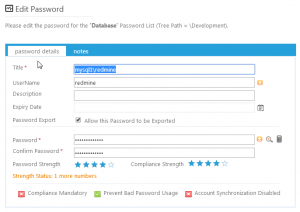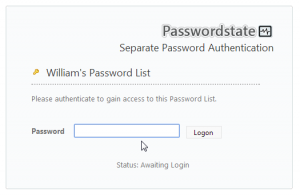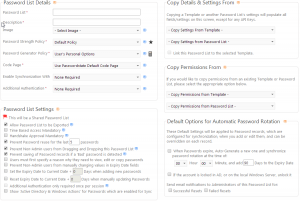Looking for remote support software that wont break the bank? Open to self-hosted alternatives? ScreenConnect is a viable feature-rich option with a very affordable price point.
![]()
ScreenConnect has changed their pricing from this article and so far I’m not recommending it anymore, please read updates here.
What Is ScreenConnect?
ScreenConnect is self-hosted remote support software, an alternative to to LogMeIn Rescue, GoToAssist, or TeamViewer. The largest difference between ScreenConnect and its competitors is that it is self-hosted, where you deploy it on your own private servers.
Why Self-Hosted
Self-hosting comes with a variety of benefits, first is complete control over your traffic and environment. You can lock administration to internal access only, put it behind a reverse proxy, require additional authentication. The sky is the limit.
However, the biggest benefit to self-hosted (at least in this case) is the price.
Licensing
The cost of ScreenConnect at the time of posting is $325.00 per license. Each license entities you to one connected support session. A support session is defined as an active connection between a host and a guest. This means this support session can float between a small team where any one person can be supporting another at a time. This also means multiple techs can be on with a single guest and still only consume one license.
Lets break down the cost for 3 years of ownership with some competitors:
| Solution | Licensing Scheme | 1st Year | 2nd Year | 3rd Year | 3 year TCO |
|---|---|---|---|---|---|
| ScreenConnect | $325/seat + 20% support renewal/year. | $325 | $65 | $65 | $455 |
| TeamViewer | $749 one time (1 authorized workstation). | $749 | $0 | $0 | $749 |
| LogMeIn Rescue | $1,188/yr | $1,188 | $1,188 | $1,188 | $3,564 |
| GoToAssist | $660/yr subscription | $660 | $660 | $660 | $1,980 |
Requirements
Full list of ScreenConnect requirements can be found here. One of the biggest benefits is that you can run ScreenConnect on a variety of server platforms, including Windows, OSX and Linux!
ScreenConnect achieves this by running a .NET application on top of the Mono platform. I’ve been weary about Mono before, but ScreenConnect’s performance and stability has changed my mind entirely about how commercially ready Mono is.
Download And Installation On Debian 7
Installation is easy, download the latest tar.gz file, unpack, run install, and follow the instructions:
root@screenconnect:~# cd /tmp root@screenconnect:/tmp# wget http://www.screenconnect.com/Downloads/ScreenConnect_4.3.6563.5232_Release.tar.gz root@screenconnect:/tmp# tar xvf ScreenConnect_4.3.6563.5232_Release.tar.gz root@screenconnect:/tmp# cd ScreenConnect_4.3.6563.5232_Install/ root@screenconnect:/tmp/ScreenConnect_4.3.6563.5232_Install# ./install.sh
Welcome to the ScreenConnect Installer The installer will do these things: 1) Prompt you for installation options 2) Display a list of actions to be taken 3) Prompt you for execution of the actions 4) Execute the actions Where would you like to install ScreenConnect? [/opt/screenconnect] What would you like as the service name for this ScreenConnect installation? [screenconnect] The installation will perform the following actions: - Install libavcodec-extra-53 with Advanced Package Tool (apt) - Install libswscale2 with Advanced Package Tool (apt) - Install libavutil51 with Advanced Package Tool (apt) - Install libavformat53 with Advanced Package Tool (apt) - Create service script at /etc/init.d/screenconnect - Create startup links in /etc/rcX.d/ directories - Copy files into /opt/screenconnect - Initialize configuration files - Start screenconnect service Do you want to install ScreenConnect? (Y/n): y [[Removed installation output]] Running 'Create service script at /etc/init.d/screenconnect'... Running 'Create startup links in /etc/rcX.d/ directories'... Running 'Copy files into /opt/screenconnect'... Running 'Initialize configuration files'... Running 'Start screenconnect service'... Installation complete! Trying to figure out the best URL for you to use... To access your new ScreenConnect installation, open a browser and navigate to: http://localhost:8040/Host root@screenconnect:/tmp/ScreenConnect_4.3.6563.5232_Install#
Navigating to http://[your host’s IP]:8040/Host will present you a wizard which will walk you through the rest of the installation process, including setting up your primary administration account and configuring your licensing information (if you need a trial license visit http://www.screenconnect.com/Try-It-Now).


Hosting a Support Session
Hosting a support session is easy, click the plus button next to the “Support” header on the left, and you’ll be greeted with a list of options for sending your support request out.
I generally use invitation only and generate URLs to send to people over chat/e-mail, ScreenConnect supports plugging into a SMTP server and sending mail for you, or leveraging your locally installed mail client to send e-mails (I prefer this configuration for this method).
Your end user will be presented with instructions on how to connect, ScreenConnect supports a variety of methods to attempt to get the end-user online, including leveraging ClickOnce and Java Web Start, standard methods you’ll see competitors using.
From there it’s like any other remote desktop support software, with a large array of tools at the top of your screen.
By far the biggest thing I love about ScreenConnect’s UI is how well it manages multi-monitor clients. In most other software switching between displays is always clunky or seems sort of “out of the way”, ScreenConnect makes it feel right.
Nothing out of the ordinary in terms of rescue features, various blanking of devices, blocking of input, safe mode support. A bunch of “must haves” have all been checked.
Meetings
Meetings are kind of the inverse of support requests, a single presenter and multiple viewers. The UI is tweaked a bit to support this concept a bit more. I’ve had some minor UI workflow issues with handing presenter around being a little clumsy, but other than that it works well.
The only downfall about using it for meetings over GoToMeeting or something similar is that ScreenConnect doesn’t support plugging it into a phone system (though I understand this isn’t a trivial task from both the programming and logistics end), so you’ll either need to set up a conference room on your phone system or use the built-in VOIP functionality.
Administration
Administration is fairly straight-forward, everything is done with role-based access, though you can lock things down and prevent users from accessing specific groups of machines, the difficulty to do so leaves much to be desired on the UI (though this is currently being worked on as I understand it).
Funny enough the status screen shots “Windows Firewall Check” even though I’m on a Linux host…
ScreenConnect supports theming, allowing you to bring it inline with your company’s brand (be aware though, changing themes restarts the web site, so don’t expect uninterrupted service if you’re messing with that).
Additionally ScreenConnect keeps an audit log in the admin control panel, very useful if you need to track down changes or actions taken against the system.
Overall
ScreenConnect packs a ton of punch for a low cost with a wide range of platform options on a stable and rapidly developed software package. One of the most impressive things I’ve seen about ScreenConnect is the speed at which they’ve moved forward and provided more features, iterated on parts that were lacking and end up delivering a stable polished product every time.
In my opinion it is a must-have. With UPNP support it allows small-time technicians to purchase a copy, install it and run it on their home machines with no effort at all, but it includes the feature set and stability to be used at your SMB office (and probably beyond).




















